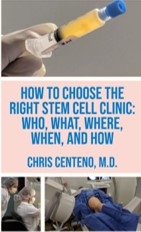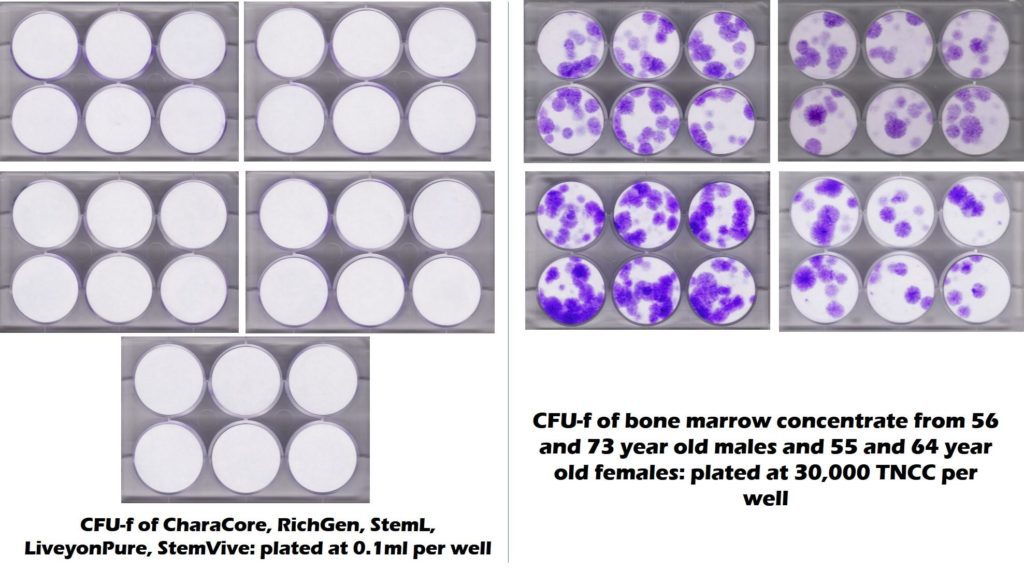This is part of my series to evaluate local clinics that are offering “stem cell therapy” to gauge the quality of what they offer. Why? Determining quality in healthcare is hard unless you’re an expert. My spotlight clinic today is Mile High Spine and Pain Center in Broomfield, Colorado. Let’s dig in.
Who Runs Mile High Spine and Pain?
Mile High Spine and Pain is located at 2205 W 136th Ave in Broomfield, Colorado. The provider who runs the clinic is not a medical doctor nor physician, but a chiropractor by the name of Warner Hettrick. He employs a nurse practitioner by the name of Jill Murphy. There are no physicians listed on the website.
Interestingly, Mile High Spine and Pain is also the local provider for Stem Cell Centers. I have blogged on this chiropractic stem cell marketing outfit in the past. Hence click above for more info.
Who Performs the Stem Cell Injections?
Mile High Spine and Pain states that it performs “Amniotic Stem Cell Therapy.” When we called, the clinic stated that they used an amniotic product and an umbilical cord product known as Liveyon. There is no physician to perform the procedures, so they are performed by the nurse. Rather than using imaging guidance to guide where the injections are going, they perform blind injections. This is a concern, as research has shown that the miss rate when injecting a simple joint like the knee can be significant. Meaning, that about 1 in 4 times the injection will miss the knee joint itself (1).
Is Mile High Spine and Pain Actually Using Stem Cells?
The clinic represents on its website that it uses stem cells. However, extensive third party university testing has been performed of the amniotic and umbilical cord products available to the clinic for injection and found no stem cells (3-5). Meaning that all of the tested products have no viable cells. Take for example one of the products that the clinic states it’s using, which is an umbilical cord blood product called Liveyon. First, it should be noted that Liveyon was involved in a serious case of contamination that caused about a dozen patients to end up in the ICU due to “stem cell” injections that were provided IV, into joints, or into the spine. Second, the CSU Translational Medicine Institute tested the Liveyon product for stem cell content. Their CFU-f test is below. In the test, on the right is middle-aged and elderly bone marrow and on the left are many different umbilical cord stem cell products, including Liveyon:
How do you interpret this? The purple dots on the right represent stem cell content (meaning middle-aged and elderly bone marrow have mesenchymal stem cells). The left side is all white. That means that there are no stem cells in any of these products, including Liveyon. Hence, is Mile High Spine and Pain actually using stem cells? No, there is no credible data showing that the clinic is injecting anyone with living stem cells.
Value Proposition
LOW. Why?
- Medical Provider: No physicians are involved here. This is a nurse practitioner who has a fraction of the medical training of a specialist physician.
- Use of Guidance: There is where the doctor uses technology like ultrasound or x-ray imaging to accurately place stem cells into the spot being treated. This is not happening in this clinic.
- Stem Cells? As you can see above, there are no stem cells being injected here. While the products may or may not have benefits, there are no research studies published on either product being used that show that they are effective.
How Do You Choose the Right Place to Get a Stem Cell Injection?
I actually wrote a little book on that topic (click on the image below to download):

The upshot? Like many alternative health clinics, regrettably what is being offered at Mile High Spine and Pain is not stem cells. So be careful out there!
Related:
Regenerative Medicine of the Rockies Review
Denver Regenerative Medicine Review
Keystone Health & Wellness Review
______________________________________
References:
(1) Bum Park Y, Ah Choi W, Kim YK, Chul Lee S, Hae Lee J. Accuracy of blind versus ultrasound-guided suprapatellar bursal injection. J Clin Ultrasound. 2012 Jan;40(1):20-5. doi: 10.1002/jcu.20890.
(2) Hashemi SM, Zhand HM, Pourrosta R. Accuracy of Ultrasound Guided Versus Blind Knee Intraarticular Injection for Knee Osteoarthritis Prolotherapy. J Anesth Crit Care Open Access 2016, 5(2): 00181 https://medcraveonline.com/JACCOA/accuracy-of-ultrasound-guided-versus-blind-knee-intra-articular-injection-for-knee-osteoarthritis-prolotherapy.html
(3) Berger DR, Lyons NF, Steinmetz NJ. In Vitro Evaluation of Injectable, Placental Tissue-Derived Products for Interventional Orthopedics. Interventional Orthopedics Foundation Annual Meeting. Denver, 2015. https://interventionalorthopedics.org/wp-content/uploads/2017/08/AmnioProducts-Poster.pdf
(4) Becktell L, Matuska A, Hon S, Delco ML, Cole B, Fortier LA. Proteomic analysis and cell viability of nine amnion-derived biologics. Orthopedic Research Society Annual Meeting, New Orleans, 2018. https://app.box.com/s/vcx7uw17gupg9ki06i57lno1tbjmzwaf
(5) Panero, A. J., Hirahara, A. M., Andersen, W. J., Rothenberg, J., Fierro, F. Are Amniotic Fluid Products Stem Cell Therapies? A Study of Amniotic Fluid Preparations for Mesenchymal Stem Cells With Bone Marrow Comparison. The American Journal of Sports Medicine, 47(5), 1230–1235. https://doi.org/10.1177/0363546519829034

